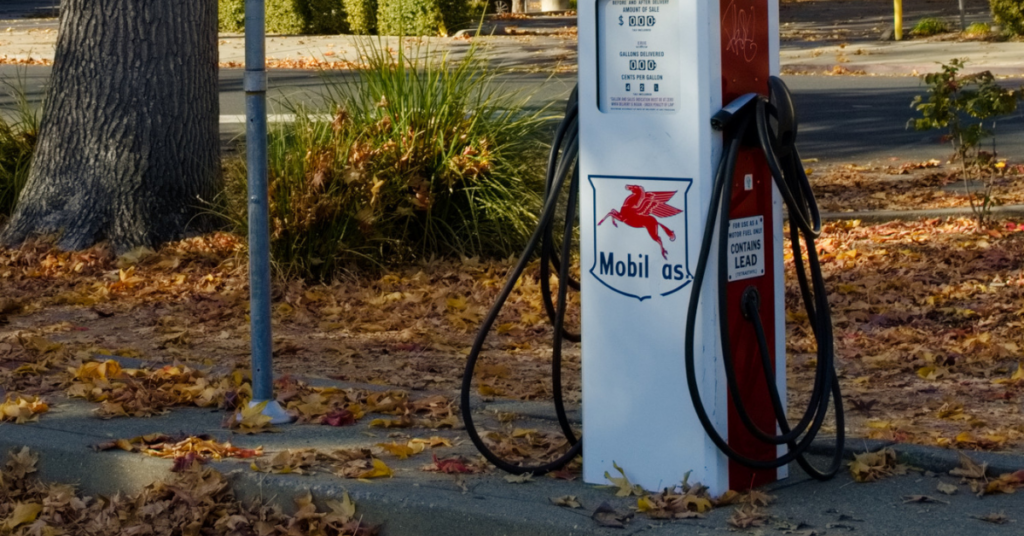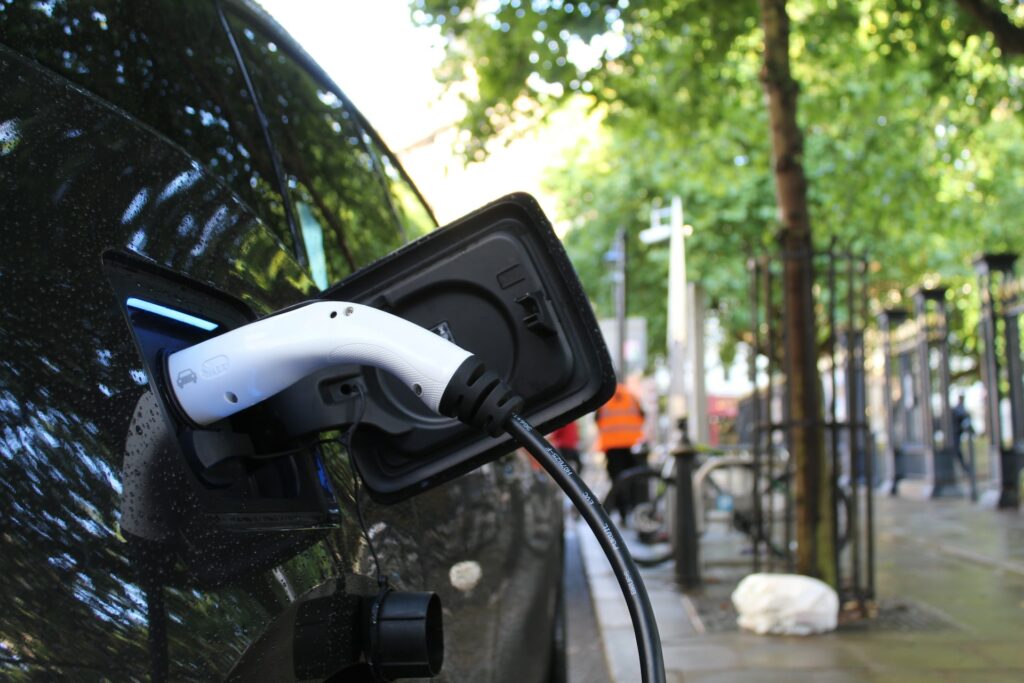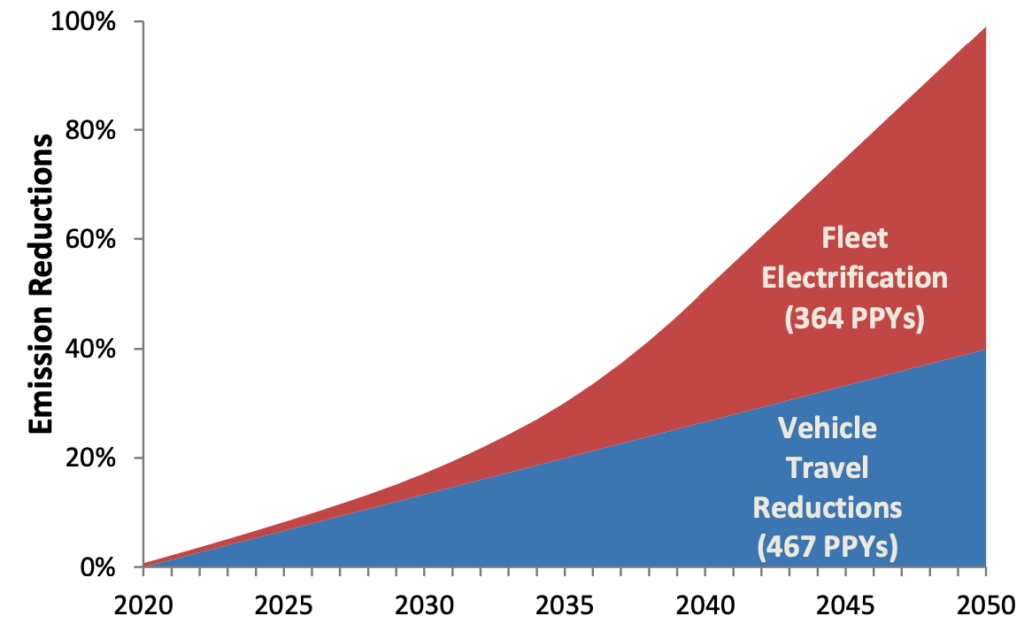
We can advance EVs and smart growth at the same time

Many climate advocates and pro-climate decision-makers are focused on electrification as the primary, or even only, emissions reduction solution in the transportation sector. As smart growth advocates, we know that electrification is essential but insufficient to achieve our greenhouse gas reduction goals. How do we push transportation electrification forward in a way that supports essential smart growth goals?

Electric vehicles aren’t the only way to travel in the above photo, where a vehicle charges next to a wide sidewalk with bike parking. Photo by Andrew Roberts on Unsplash.
Transportation is the largest energy-related source (38 percent) of greenhouse gas emissions. Emissions reduction models consistently show that electrification is essential to eventually get us to zero emissions on transportation. These models also show that EVs don’t get us there fast enough. Cars last on average for 15-20 years, and that means it will take time for the fleet to turn over from internal combustion engine (ICE) vehicles to electric.
To draw emissions down quickly enough to meet targets, we need to remake our transportation and land use system to be less car-dominated at the same time that we electrify. Transportation for America stepped up to get involved in this intersection between the two big strategies for transportation emissions reduction—electrification and VMT reduction. Alongside the Clean Vehicles Campaign, we co-lead CHARGE, a broad-based coalition seeking to advance transportation in a way that achieves multiple goals, including advancing smart growth.

Considering embodied emissions and rebound effects, electrification typically reduces emissions by about 70 percent compared with comparable fossil fuel vehicles and takes decades to achieve significant results. Many vehicle travel reductions can be implemented quickly and provide large co-benefits by reducing vehicle traffic and sprawl. As a result, travel reductions generally achieve more percentage point years (PPYs) of emission reductions and more total benefits than electrification. Chart and analysis by Victoria Transport Policy Institute.
Cross-pollination
EVs are essential but insufficient to reach climate goals, and multimodal smart growth strategies reduce emissions while delivering other benefits like equitable access to opportunity, reduced urban footprint, and less need for battery minerals, which can relieve supply chain and global security pressures.
As smart growthers in the EV-charging space, we get the opportunity to take EV enthusiasts by the hand and keep educating and reminding them about the importance of the VMT side of the equation, the co-benefits, and the strategies to accomplish it. Here are a few of our top takeaways.
1. We need to be clear that it’s not either-or. It’s both-and!
Often, rationales for reducing car dependency are misconstrued by the media as a reason to oppose the EV transition, but this is not helpful. EVs are a valuable tool for reducing emissions—they simply can’t be the only tool.
2. Learning more about how each side is approaching their issues is critical.
At first blush, electrification looks simple—just get people into EVs—while VMT reduction seems more complicated, involving land use, parking policy, street design, and transit investment. The real truth is that electrification has its complexities too. Since getting more involved in these issues, we’ve learned a lot about electric utilities, interoperability standards, tax incentives, and more.
3. Smart growth solutions can help us reach our electrification goals.
The interactions between smart growth and transportation electrification get pretty interesting. There are a few areas where we need to protect smart growth goals from misguided electrification proposals. For example, we shouldn’t require transit agencies to transition to zero-emissions in a way that undercuts transit service, and we need to be careful about subsidies for EVs that encourage car ownership or primarily benefit wealthy new car purchasers. However, education across the EV-smart growth divide has helped us to surface many powerful synergistic solutions together.
In our EV blog series, we’ve shared strategies in the zero-emission fleet transition which work in concert with smart growth. These strategies can both advance the EV transition and reduce the need to drive so much. They include electric carshare services, charger-oriented development, the NEVI program, equitable access to chargers, integrating smart parking policy with EV-charging, and electric micromobility. To learn more about reducing transportation emissions, check out our report Driving Down Emissions and go here to learn more about CHARGE, the coalition we co-lead on EV issues.



